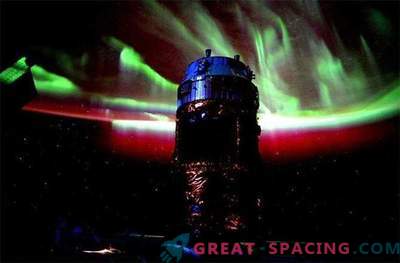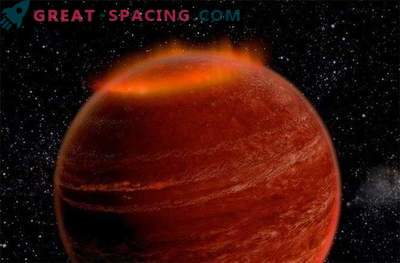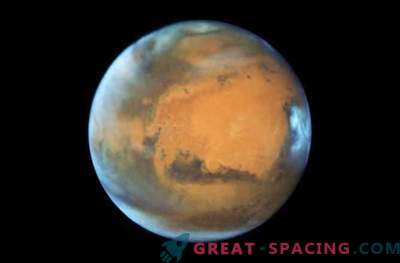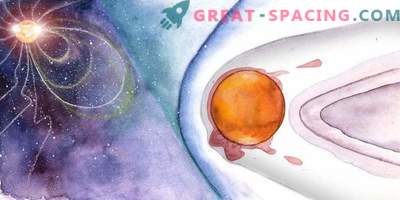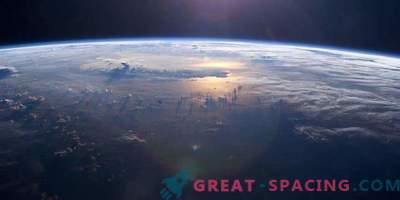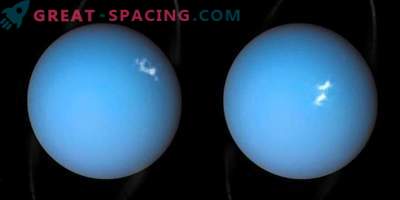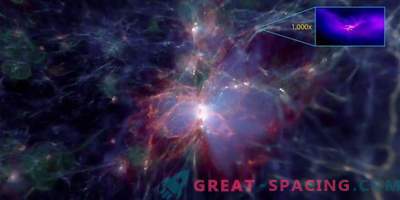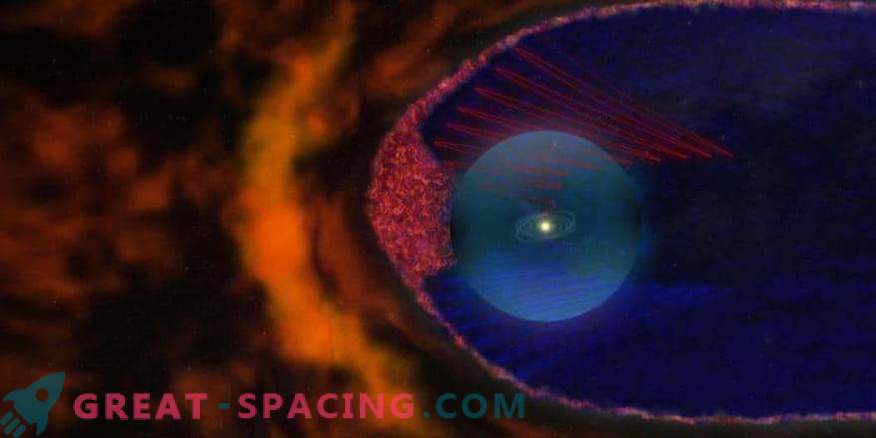
The space seems to be empty, although in reality this is a dynamic place, filled with invisible matter. Magnetospheres - magnetic fields, enveloping most of the planets. They beat off cosmic rays released by the Sun, or come from interstellar space. Function as a protective shell from the dangerous effects of radiation.
But they are not all equally strong. Venus and Mars are devoid of this feature, while others are very different. NASA carefully studied the state of the magnetic fields when the probes reached the outer planets, and created a complete picture of the process of magnetosphere formation and contact with the environment.
Earth
Earth's magnetosphere
Formed by a constantly moving molten metal inside the planet. The shape resembles the cone of ice cream with a rounded front and an extended tail turned toward the Sun.
Lights are created near the territory of the magnetic poles. Perhaps the terrestrial magnetosphere influenced the formation of life.
Mercury
The planet is endowed with a core with a large amount of iron, but the strength of the magnetic field reaches only 1% of the earth. It is compressed by intense stellar glow, which limits its length.
Jupiter
Jupiter's Magnetosphere
After the Sun, it has the strongest and largest magnetosphere in the system, extending 12 million miles. The planet does not have a nucleus with molten metal, so the magnetic field is formed by compressed liquid metallic hydrogen.
One of Jupiter’s moons Io is also famous for its volcanic activity, releasing particles into the planetary magnetosphere. They form powerful radiation belts and auroras. The largest satellite has also its own field, Ganymede (the only moon).
Saturn
Saturn's Magnetosphere
The scale ring system influenced the shape of the magnetosphere. Molecules of oxygen and water evaporated from the rings and released particles. Some satellites help to catch these particles from the magnetosphere, but Enceladus (active geysers), on the contrary, replenishes reserves.
Uranus
Uranus Magnetosphere
The planet’s magnetosphere was noticed only in 1986 during the passage of Voyager-2. The magnetic field and the axis are 59 degrees away from alignment. Also, the magnetic field does not pass through the planetary center, so its force changes abruptly on the surface.
Neptune
Neptune's Magnetosphere
In 1989, Voyager-2 flew to Neptune. It also noticed the deviation of the magnetosphere from the axis of rotation by 47 degrees, because of which there is a difference in force on the surface. Therefore, auroras appear all over the planet.
Outside our system, we managed to fix auroras on brown dwarfs. There is evidence of the presence of the magnetosphere on large-scale exoplanets. But to confirm will need more observations.
